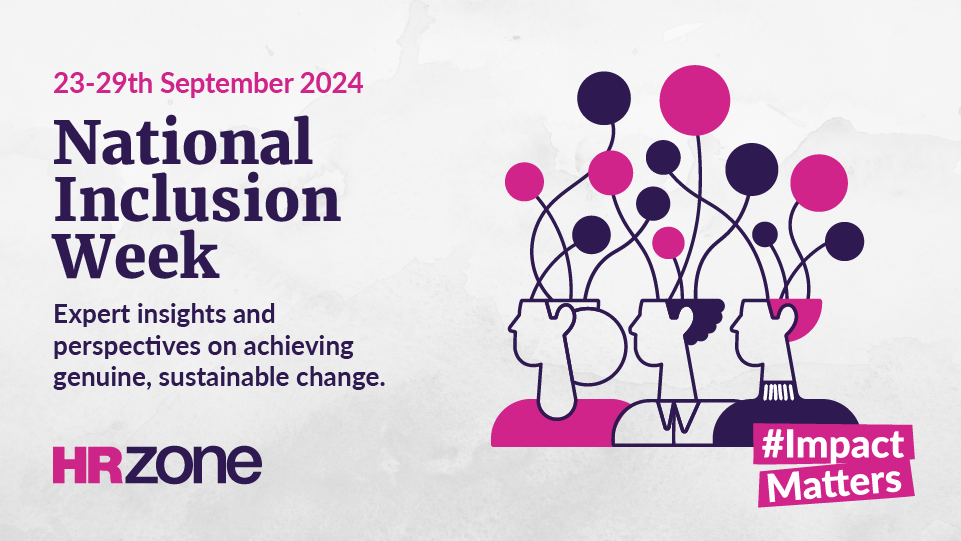This article is part of an HRZone series recognising National Inclusion Week 2024: #ImpactMatters
Diversity, equity and inclusion (DEI) backlash at work is neither new nor universal. But it remains an ongoing concern and obstacle to positive social change and progressive, inclusive organisations. Two potential ways for HR to further address it are as
- A resistance to change problem
- A silo problem
Here, Tom Calvard offers recommendations for addressing DEI backlash through these two lenses. This article is part of HRZone’s National Inclusion Week 2024 series.
Ongoing backlash to DEI
Regarding DEI efforts in organisations, backlash – or strong negative reactions to change – are not new. The focus of DEI work and its implementation, including the terminology and acronym, has faced a variety of critical concerns over decades of its evolution.
DEI has often proved difficult for managers to implement in practice, or ‘easy to say, difficult to do’. Forms of affirmative and positive action have proved contentious in the past, and remain so, with objectors appealing to concerns over merit and reverse discrimination.
Observations continue to emerge, particularly in the UK and US, suggesting a concern to monitor, understand and address what is happening to DEI. At present, there is a split between companies cutting back on DEI, versus those that continue to advance and mature their approaches.
HR can help address DEI backlash through a twofold focus.
A complicated picture
Contrasting commentaries and announcements about DEI make for a complicated picture of change. Prominent ‘culture war’ or populist critics of DEI coexist with increasing levels of positive reactions towards DEI among many workers.
The US Supreme Court’s 2023 decision to overturn race-based affirmative action in higher education and company rollbacks on DEI have sparked debate. But workforce demand and leaders’ plans for DEI programmes remain strong in many other organisations.
This does not mean DEI backlash is non-existent within organisational contexts. However, backlash can also be reframed in part as evidence of a positive change overall – with DEI progress made by working through objections and winning over powerful allies.
The use of concepts such as ‘woke’ or ‘wokeness’ in DEI backlash is a particularly troubling reaction
Practices, concerns and reactions
Whether the phrase ‘DEI backlash’ is used or not, different concerns and reactions to diversity practices and their implementation can arise in different circumstances. Four common concerns include the use of hiring quotas, training targeting ‘bad guys’ for shaming, tokenistic promotions, and legal risks.
The use of concepts such as ‘woke’ or ‘wokeness’ in DEI backlash is a particularly troubling reaction. It risks undermining and misrepresenting hard-earned legal and organisational advances, while also enabling powerful elites to sow division and use its rhetoric for self-interested ends.
Those trying to improve diversity, equity and inclusion without much support face DEI fatigue. To prevent or minimise this ‘backfire’, or unintended negative outcomes, organisations need to rethink how they engage and communicate with both minorities and majorities about diversity and inclusion in context.
DEI backlash and resistance to change
If we view DEI backlash as a form of ‘resistance to change’, then this enables us to incorporate parallel insights from change management, another area of HR practice. Understandings of resistance to change have evolved to offer insights about individual and contextual influences.
For example, resistance to change does not need to be ‘overcome’ or used to blame others, but can be a sign that better relationships between change agents and recipients need to be cultivated. Resistance can be valuable if used to engage feedback and manage conflict.
Often, people are ambivalent about change; resisting it in some ways, while remaining open to it in others. Resistance may not be linked to individuals but part of background conversations with additional context. Some resistance can reflect positive efforts to raise organisational concerns or implications.
Dealing with resistance to DEI change
Dealing with resistance to (DEI) change means anticipating, understanding and responding to it. This might involve explaining it in different ways to people in different roles and levels, gathering doubts and ideas to better incorporate them, and uncovering issues with other, past initiatives.
Different strategies can be chosen depending on the cause and context of the resistance, including education, participation, facilitation, negotiation or coercion. Experienced DEI change agents will use a variety of tactics to ‘sell’ others on the ‘issues’, thinking about small wins, relationships, timing and worldviews.
For example, if a resistor says ‘I think this DEI stuff has gone too far’, an influential change agent might respond with curiosity, questioning of definitions (eg merit, fairness), explorations of privilege, and ways everyone can help each other feel included.
At the same time, it’s important to consider how socially, politically and ethically challenging some DEI conversations can be. But if ‘tough topics’ related to diversity, identity and justice are carefully framed for more ‘productive disagreement’, there can be modest gains in understanding and respect.
DEI backlash and organisational silos
If resistance to change can be used to consider the more social and psychological aspects of DEI backlash, then organisational silos can be used to consider how the structure and design of the organisation may also be implicated.
Linking DEI to silos can help highlight how both the DEI function and roles themselves may be disconnected from other parts of the organisation
So-called ‘silo effects’ can be common in today’s organisations, because it is tricky to strike a balance between protecting specialised work in tidy, separate categories and the need to ensure adequate cross-functional and cross-company collaboration.
In the case of DEI, there is clearly awareness of this already in terms of the need to achieve ‘mainstreaming’ or ‘maturity’ of DEI within broader business strategies. But many companies continue to struggle with this more holistic embedding across silos.
Linking DEI to silos can help highlight how both the DEI function and roles themselves may be disconnected from other parts of the organisation (eg through tokenism), and different minority groups of employees from each other (eg separate employee resource groups or ERGs).
Shaking up silos to spread and sustain DEI
Shaking up or ‘busting’ silos is not easy (and not always desirable), but rests on the need to spread and sustain DEI to make it ‘all-inclusive’ for all across the organisation.
Bridging silos means bringing DEI and workplace data together, as when AirBnB addressed racial discrimination on its platform after research showed it was a serious issue. Similarly, HR can use ‘co-creation’ strategies – working across stakeholder groups on specific needs to add DEI value.
Middle management and change agent roles could also be designed to combine DEI with work across functional and other organisational boundaries. Optimal organisation designs are notoriously difficult to achieve, but tend to aim for ‘simple but smart’ links, inducing cooperation and accountability beyond single silos.
Conclusion: implications for HR
In sum, HR can help address DEI backlash through a twofold focus. First, on resistance to change for the more psychological, social and cultural elements. And second, on redesigning DEI across silos for the more structures and systems elements.
Further implications and recommendations:
- Going beyond the ‘business case’ for DEI to consider multidimensional reactions to change and areas of tension or paradox
- Greater cross-fertilisation between DEI and change management, organisation development and design (OD&D) perspectives
- Fuller evidence-based evaluations of reactions to DEI-related changes, to diagnose the feelings, behaviours and beliefs arising, and specific objects or targets of resistance
- Using organisation design principles and tests to frequently assess how embedded DEI is across organisational structures and processes
- Creatively linking DEI closely to other cross-functional challenges and strategic stakeholder concerns, such as hybrid working, people analytics, flexibility, sustainability, risk and wellbeing







